 W
WAku-Aku: the Secret of Easter Island is a 1957 book by Thor Heyerdahl published in English the following year. The book describes the 1955–1956 Norwegian Archaeological Expedition's investigations of Polynesian history and culture at Easter Island, the Austral Islands of Rapa Iti and Raivavae, and the Marquesas Islands of Nuku Hiva and Hiva Oa. Visits to Pitcairn Island, Mangareva and Tahiti are described as well.
 W
WAncient Monuments of the Mississippi Valley (1848) by the Americans Ephraim George Squier and Edwin Hamilton Davis is a landmark in American scientific research, the study of the prehistoric indigenous mound builders of North America, and the early development of archaeology as a scientific discipline. Published in 1848, it was the Smithsonian Institution's first publication and the first volume in its Contributions to Knowledge series. The book had 306 pages, 48 lithographed maps and plates, and 207 wood engravings. The book was reissued in 1998 in paperback, with an introduction by David J. Meltzer, professor of anthropology at Southern Methodist University.
 W
WAncient Ruins and Archaeology is a 1964 science book by L. Sprague de Camp and Catherine Crook de Camp, one of their most popular works. It was first published by Doubleday and has been reprinted numerous times by other publishers. Paperback editions since 1972 have generally reverted to the title Citadels of Mystery, which was the de Camps' original working title. Translations into French, German and Portuguese have also appeared. Portions of the work had previously appeared as articles in the magazines Astounding Science Fiction, Fate, Frontiers, Natural History Magazine, Other Worlds Science Stories, Science Fiction Quarterly, and Travel.
 W
WAngkor: Heart of an Asian Empire is an illustrated monograph on archaeology and rediscovery of Angkor Wat, published in pocket format by Éditions Gallimard in 1989. Written by the French archaeologist and art historian Bruno Dagens, this work is the 64th volume in the “Découvertes Gallimard” collection, and was adapted into a documentary film in 2002, with the same title.
 W
WAnglo-Saxon Deviant Burial Customs is an archaeological study of atypical burial practices in Anglo-Saxon England. It was written by the English archaeologist Andrew Reynolds of the UCL Institute of Archaeology, based on the work which he had undertaken for his PhD, completed in 1998. The book was first published by Oxford University Press in 2009 as a part of their series on "Medieval History and Archaeology", edited by John Blair and Helena Hamerow.
 W
WThe Le Antichità di Ercolano Esposte is an eight-volume book of engravings of the findings from excavating the ruins of Herculaneum in the Kingdom of Naples. It was published between 1757 and 1792, and copies were given to selected recipients across Europe. Despite the title, the Antichità di Ercolano shows objects from all the excavations the Bourbons undertook around the Gulf of Naples. These include Pompeii, Stabiae, and two sites in Herculaneum: Resina and Portici.
 W
WThe Archaeology of Death and Burial is an archaeological study by the English archaeologist Mike Parker Pearson, then a professor at the University of Sheffield. It was first published in 1999 by Sutton Publishing Limited, and later republished by The History Press.
 W
WThe Archaeology of Hindu Ritual: Temples and the Establishment of the Gods is an archaeological study focusing in on the early development of Hinduism within the Gupta Empire between the 4th and 6th centuries CE. Written by the British archaeologist Michael D. Willis, curator of the South Asian and Himalayan collection at the British Museum, it was published by Cambridge University Press in 2009.
 W
WThe Archaeology of Ritual and Magic is an archaeological study of the material evidence for ritual and magical practices in Europe, containing a particular emphasis on London and South East England. It was written by the English archaeologist Ralph Merrifield, the former deputy director of the Museum of London, and first published by B.T. Batsford in 1987.
 W
WThe Archaeology of Shamanism is an academic anthology edited by the English archaeologist Neil Price which was first published by Routledge in 2001. Containing fourteen separate papers produced by various scholars working in the disciplines of archaeology and anthropology, it looks at the manner in which archaeologists can interpret shamanism in the archaeological record.
 W
WThe Bible Unearthed: Archaeology's New Vision of Ancient Israel and the Origin of Its Sacred Texts, a book published in 2001, discusses the archaeology of Israel and its relationship to the origins and content of the Hebrew Bible. The authors are Israel Finkelstein, Professor of Archaeology at Tel Aviv University, and Neil Asher Silberman, an archaeologist, historian and contributing editor to Archaeology Magazine.
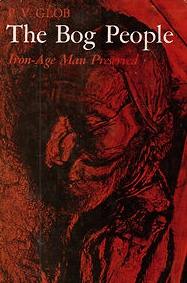 W
WThe Bog People: Iron-Age Man Preserved is an archaeological study of the bog bodies of Northern Europe written by the Danish archaeologist P.V. Glob. First published in 1965 by Gyldendal under the Danish title of Mosefolket: Jernalderens Mennesker bevaret i 2000 År, it was translated into English by the English archaeologist Rupert Bruce-Mitford and published by Faber and Faber in 1969. In 1966 it was translated into German by Thyra Dohrenburg and published by Winkler Werlag Munich under the title Die Schläfer im Moor.
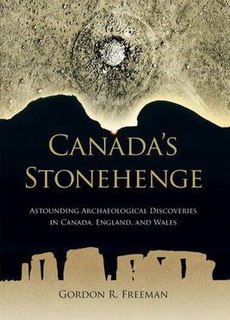 W
WCanada's Stonehenge: Astounding Archaeological Discoveries in Canada, England, and Wales is a 2009 self-published book by chemistry professor Gordon Freeman, in which the author claims that the Majorville Cairn and Medicine Wheel site, located south of Bassano, Alberta is actually a precise 5,000-year-old calendar. He also discusses Stonehenge, which he believes was also a calendar.
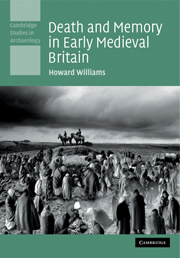 W
WDeath and Memory in Early Medieval Britain is an archaeological study of mnemonic elements in the funerary practices of Early Medieval Britain, written by the British archaeologist Howard Williams. The book was first published by Cambridge University Press as part of their series "Cambridge Studies in Archaeology" in 2006.
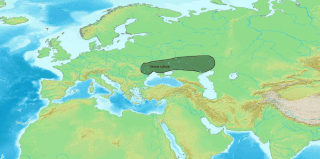 W
WThe Encyclopedia of Indo-European Culture is an encyclopedia of Indo-European studies and the Proto-Indo-Europeans. The encyclopedia was edited by J. P. Mallory and Douglas Q. Adams and published in 1997 by Fitzroy Dearborn. Archaeological articles are written by Mallory, linguistic articles are written by Adams, and includes a distinguished Who's Who of 1990s Indo-Europeanists who made contributions as sub-editors. While not a polemic, the work in part responds to Colin Renfrew's Anatolian hypothesis of Indo-European origins.
 W
WFragments from Antiquity: An Archaeology of Social Life in Britain, 2900-1200 BC is a book on the archaeology of Britain in the Late Neolithic and Early Bronze Ages written by the British archaeologist John C. Barrett, then a senior lecturer at the University of Glasgow. It was first published in 1994 by the Oxford-based company Blackwell as a part of their ‘Social Archaeology’ series, edited by the archaeologist Ian Hodder of the University of Cambridge.
 W
WGods, Graves, and Scholars is a book by German writer C. W. Ceram about the history of archaeology. First published in 1949, Ceram's book introduced the general reading public to the origin and development of archaeology. It sold extremely well — over five million copies have been published in 30 languages — and remains in print today.
 W
WHidden Treasures of Swat (ISBN 978-969-23042-0-7) is a non-fiction book based on the achievements of Italian Archaeological Mission (IAM) in Pakistan and Department of Archaeology and Museums (DOAM) Pakistan. Six major discoveries by Italian archaeologists in Swat District of the Khyber Pukhtunkhwa province of Pakistan are discussed in the book.
 W
WHydriotaphia, Urn Burial, or, a Discourse of the Sepulchral Urns lately found in Norfolk is a work by Sir Thomas Browne, published in 1658 as the first part of a two-part work that concludes with The Garden of Cyrus.
 W
WInside the Neolithic Mind: Consciousness, Cosmos and the Realm of the Gods is a cognitive archaeological study of Neolithic religious beliefs in Europe co-written by the archaeologists David Lewis-Williams and David Pearce, both of the University of the Witwatersrand in Johannesburg, South Africa. It was first published by Thames and Hudson in 2005. Following on from Lewis-Williams' earlier work, The Mind in the Cave (2002), the book discusses the role of human cognition in the development of religion and Neolithic art.
 W
WLost Cities and Vanished Civilizations is a 1962 book by Robert Silverberg that deals with the then-current archaeology studies of six past civilizations. The book is divided into six chapters, and each deals with a particular civilization: Pompeii, Troy, Nicola, Babylon, Chichen Itza, and Angkor Wat. Silverberg also deals with the historical search for the past through the life works of archaeologists such as Heinrich Schliemann and Henry Rawlinson.
 W
WThe Making of the English Landscape is a 1955 book by the English local historian William George Hoskins. It is illustrated with 82 monochrome plates, mostly photographs by Hoskins himself, and 17 maps or plans. It has appeared in at least 35 editions and reprints in English and other languages.
 W
WThe Megalithic European: The 21st Century Traveller in Prehistoric Europe (2004) is Julian Cope's second book on historic sites, this time looking at continental Europe and Ireland. Like its predecessor—The Modern Antiquarian—the book is split into a shorter, discursive introduction with the bulk of the text being a gazetteer of sites. As with The Modern Antiquarian, sites are listed alphabetically within their sections.
 W
WThe Mind in the Cave: Consciousness and the Origins of Art is a 2002 study of Upper Palaeolithic European rock art written by the archaeologist David Lewis-Williams, then a professor at the University of the Witwatersrand in Johannesburg, South Africa.
 W
WMiscellaneous Babylonian Inscriptions is a 1918, Sumerian linguistics and mythology book written by George Aaron Barton.
 W
WThe Modern Antiquarian: A Pre-Millennial Odyssey Through Megalithic Britain is a guide book written by Julian Cope, published in 1998. It is written as a travelogue of British megalithic sites, including Stonehenge and Avebury. Types of artifacts catalogued include stone circles, hillforts and barrows.
 W
WThe Pagan Middle Ages is an academic anthology edited by the Belgian historian Ludo J.R. Milis. Containing eight papers by various Dutch and Belgian historians and archaeologists, it is devoted to the study of how various pre-Christian religious beliefs and practices survived and were absorbed into the new, Christian society in Europe during the Middle Ages. It was first published by the Institut Historique Belge de Rome in 1991 under the Dutch title of De Heidense Middeleeuwen and subsequently translated into English by Tanis Guest and published by The Boydell Press in 1998.
 W
WEl Perú: Itinerarios de Viajes is an expansive written work covering a variety of topics in the natural history of Peru, written by the prominent Italian-born Peruvian geographer and scientist Antonio Raimondi in the latter half of the 19th century. The work was compiled from extensive and detailed notes Raimondi took while criss-crossing the country, studying the nation's geography, geology, meteorology, botany, zoology, ethnography, and archaeology; El Perú focuses to some extent on each of these topics and others. The first volume was published in 1874; several more volumes were published both before Raimondi's death and posthumously from his notes, the last being released in 1913, making a five volume set. The volumes are a classic example of exploration scholarship, and form one of the earliest and broadest scientific reviews of Peru's natural and cultural heritage.
 W
WRites of the Gods is an archaeological study of religious belief and ritual practices across prehistoric Britain from the Old Stone Age through to the Iron Age. Written by the prominent English archaeologist and megalithic specialist Aubrey Burl, it was first published in 1981 by J.M. Dent & Sons Ltd.
 W
WRitual and Domestic Life in Prehistoric Europe is a book by the English archaeologist Richard Bradley of the University of Reading. It was first published by Routledge in 2005.
 W
WRock Art and the Prehistory of Atlantic Europe: Signing the Land is an archaeological book authored by the English academic Richard Bradley of the University of Reading. It was first published by Routledge in 1997.
 W
WA Short History of Progress is a non-fiction book and lecture series by Ronald Wright about societal collapse. The lectures were delivered as a series of five speeches, each taking place in different cities across Canada as part of the 2004 Massey Lectures which were broadcast on the CBC Radio program, Ideas. The book version was published by House of Anansi Press and released at the same time as the lectures. The book spent more than a year on Canadian best-seller lists, won the Canadian Book Association's Libris Award for Non-Fiction Book of the Year, and was nominated for the British Columbia's National Award for Canadian Non-Fiction. It has since been reprinted in a hardcover format with illustrations and also in Kindle and EPUB digital formats.
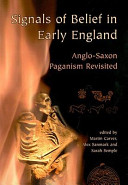 W
WSignals of Belief in Early England: Anglo-Saxon Paganism Revisited is an academic anthology edited by the British archaeologists Martin Carver, Alex Sanmark and Sarah Semple which was first published by Oxbow Books in 2010. Containing nine separate papers produced by various scholars working in the fields of Anglo-Saxon archaeology and Anglo-Saxon history, the book presents a number of new perspectives on Anglo-Saxon paganism and, to a lesser extent, early Anglo-Saxon Christianity. The collection – published in honour of the archaeologist Audrey Meaney – was put together on the basis of a conference on "Paganism and Popular Practice" held at the University of Oxford in 2005.
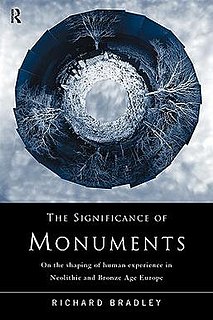 W
WThe Significance of Monuments: On the Shaping of Human Experience in Neolithic and Bronze Age Europe is an archaeological book authored by the English academic Richard Bradley of the University of Reading. It was first published by Routledge in 1998.
 W
WStonehenge in its landscape: Twentieth century excavations by Rosamund M. J. Cleal, Karen E. Walker and Rebecca Montague is an archaeological report on Stonehenge published in 1995. It presented the results of a two-year intensive study of all the known records of the various excavations at Stonehenge in the twentieth century, including a rephasing of the development of the monument.
 W
WSymbols of Power: At the Time of Stonehenge is a book dealing with the archaeology of hierarchical symbols in the British Isles during the Neolithic and Early Bronze Ages. Co-written by the archaeologists D.V. Clarke, T.G. Cowie and Andrew Foxon, it also contained additional contributions from other authors including John C. Barrett and Joan Taylor. Published by the National Museum of Antiquities of Scotland in 1985, it was designed to accompany an exhibition on the same subject that was held that year in Edinburgh, Scotland.
 W
WThe Tribe of Witches: The Religion of the Dobunni and Hwicce is a historical and archaeological study of pre-Christian religion among the Iron Age Dobunni and the Early Medieval Hwicce, two tribal groups who lived in central England. It was written by the archaeologist Stephen J. Yeates and published by Oxbow Books in 2008. Yeates had previously published his theories in a three-volume British Archaeological Report monograph entitled Religion, Community and Territory: Defining Religion in the Severn Valley and Adjacent Hills from the Iron Age to the Early Medieval Period (2006).
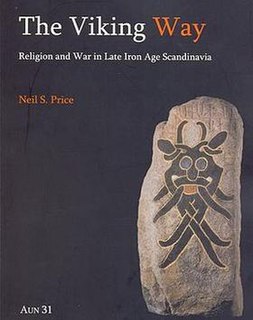 W
WThe Viking Way: Religion and War in Late Iron Age Scandinavia is an archaeological study of Norse paganism in Late Iron Age Scandinavia. It was written by the English archaeologist Neil Price, then a professor at the University of Aberdeen, and first published by the Department of Archaeology and Ancient History at Uppsala University in 2002. A revised second edition is due to be published in 2017 by Oxbow Books.
 W
WWhere Troy Once Stood is a 1990 book by Iman Jacob Wilkens that argues that the city of Troy was located in England and that the Trojan War was fought between groups of Celts. The standard view is that Troy is located near the Dardanelles in Turkey. Wilkens claims that Homer's Iliad and Odyssey, though products of ancient Greek culture, are originally orally transmitted epic poems from Western Europe. Wilkens disagrees with conventional ideas about the historicity of the Iliad and the location and participants of the Trojan War.